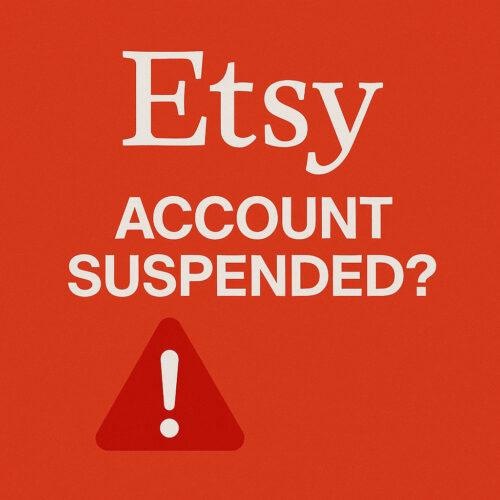Despite being one of the largest e-commerce platforms out there, Etsy’s focus on handcrafted, vintage, and personalized goods makes it appear more humane than the competition. Authenticity sells, especially now that ads featuring mass-market, often poorly-made items are increasingly harder to avoid.
Etsy provides a genuine opportunity to turn true creativity and passion into a steady income stream. The platform takes protecting both store owners with one-of-a-kind offerings and the buyers who trust them very seriously. Suspensions for sellers who violate Etsy guidelines are swift and often crippling.
I’ve done extensive research on Etsy, why it suspends accounts, and what sellers can do to mitigate such suspensions. This guide is a detailed account of my findings and is worth reading if you’ve suffered a suspension. Better yet, do so preemptively to minimize the chances of getting one.
TL;DR: If you’re looking for a proven way to maintain good standing for all your Etsy accounts, you can watch this video instead. It talks about general multi-accounting, but the principles apply to Etsy accounts just as effectively.
What Causes Most Etsy Account Suspensions?
Etsy will sometimes suspend one’s account without stating an official reason. In my experience, this happens disproportionately to new sellers, which the platform scrutinizes for faults more and may ban via automatic review. However, most account suspensions happen due to the following reasons:
- Incomplete verification – Etsy requires that all sellers provide valid ID like their name, physical and email addresses, etc. Most importantly, the platform needs tax information for US residents and banking info for non-residents. Not providing these details results in being put into forced vacation mode or being temporarily suspended.
Etsy may also ask for additional information, like amendments to your store’s return policy, at a later date. Not providing it in time may trigger a suspension.
- Outstanding dues – Another reason I commonly see is sellers who get behind on their payments. There are many of these, from listing fees through shipping label and regulatory operating fees to Etsy Plus and Pattern subscriptions. Being on top of and having enough funds to cover all of these are essential.
- IP & trademark violations – While Etsy promotes bespoke and hand-crafted items, it has a strict policy against using trademarked content or designs and others’ intellectual property when making such items. Sellers who think there’s a loophole to exploit may be unpleasantly surprised and suspended.
- Selling prohibited items – Etsy keeps an extensive list of items you aren’t allowed to sell. Some are common to all the major online marketplaces. Things like drugs & alcohol, live animals, and dangerous or illegal items. Etsy has no tolerance for items that promote hate or incite violence. Nudity and sexual themes are also prohibited.
- Customer dissatisfaction – Etsy expects stores to offer excellent customer service and keep shipping times low. It may suspend a store if customers consistently lodge complaints.
- Repeated policy violations – Disregarding or trying to circumvent the Seller Policy is a common yet vague reason. You’ll usually receive a warning to stop activities like keyword spamming. More serious violations, like getting buyers to pay off-platform, result in swift and more serious actions.
- Trying to open a new store after a suspension – A classic blunder that disproportionately affects new sellers again. Providing the same legal and financial info for a new shop, even if you use a different email address, will result in the immediate termination of the new store and any subsequent ones.
Why was my Etsy account suspended even though I just opened my shop?
New Etsy accounts are frequently suspended as part of Etsy’s automatic verification process, often within the first few days or even hours of opening. This is actually very common and happens to many legitimate sellers who haven’t violated any policies. Etsy suspends new shops to verify identification, banking information, and ensure all policies are being followed before allowing them to operate fully.
Several specific factors can trigger automatic suspensions for new accounts. Using a VPN while setting up or accessing your shop can make it appear as though you’re logging in from multiple countries, which Etsy interprets as suspicious activity or a potential hack. Falsifying your location or listing a country different from where you actually reside is one of the most common reasons for instant suspension, as Etsy requires accurate location data for tax and legal compliance. Additionally, if your personal information doesn’t match across all fields, or if your name, address, or bank account is associated with a previously banned Etsy account (perhaps a friend or family member who shares your internet connection or address), your new shop may be automatically flagged.
Most sellers who were suspended immediately after opening find their accounts reinstated within one to two weeks once Etsy completes the verification process. If you receive a suspension notice, check your email for specific instructions, complete any requested verification steps, and be patient—in many cases, the account is reinstated automatically without needing to file an appeal.
Using multiple accounts
It’s possible to sell on multiple accounts. If anything, Etsy is one of the most lenient online marketplaces I’ve encountered concerning this. There’s no limit to how many shops you can open, as long as each has a unique email address and branding and offers different merchandise.
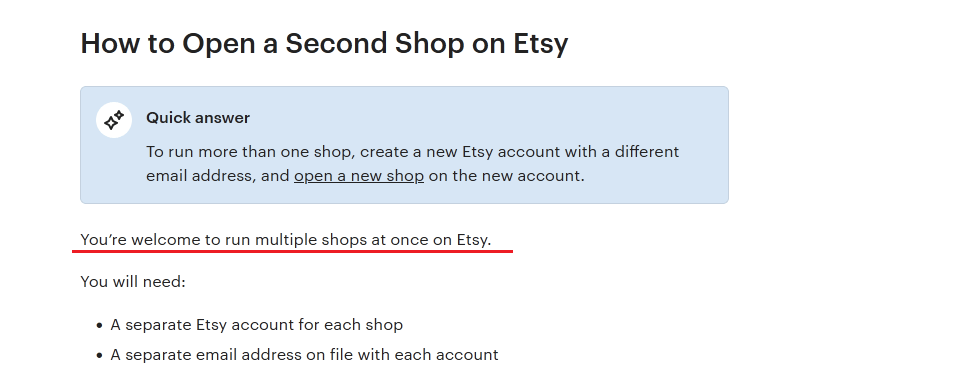
While great in theory, the reality for sellers isn’t as rosy. You need to inform Etsy about every new shop. Each shop’s About page also has to disclose that you operate the others. Most importantly, all shops become linked to your identity and bank account.
That means a single account suspension can trigger scrutiny of and even lead to a temporary or permanent suspension of all others. Risking the impeccable reputation of your main stores that took years to build up over a late policy update or unknown copyright infringement in a newly opened one isn’t worth it.
What is the difference between a temporary and permanent Etsy account suspension?
A temporary suspension occurs when Etsy restricts your account due to resolvable issues like overdue bills, missing tax information, incomplete bank account verification, or identity verification problems. You’ll typically receive an email explaining how to resolve the issue, and once you address it, such as paying your bill or updating your information, your account should be automatically reinstated. During a temporary suspension, you can still fulfill existing orders, message buyers, and resolve cases, but your shop is hidden from search results and you cannot create new listings.
A permanent suspension happens when Etsy determines you’ve seriously or repeatedly violated their policies, such as selling prohibited items, intellectual property infringement, or engaging in fraudulent activity. The suspension email will explicitly state “permanently suspended” in both the subject line and body. Unlike temporary suspensions, permanent ones require filing a formal appeal, and even then, there’s no guarantee your account will be reinstated. If your appeal is rejected, the decision is final and your account cannot be reopened.
What Happens to Suspended Accounts?
I’ve researched and written about account suspension consequences across online marketplaces, and the severity of Etsy’s isn’t as strict as some. It’s not as stringent as Amazon’s restrictions, yet harder to appeal than eBay’s.
Even so, suffering a suspension will severely affect any Etsy store. On the bright side, sellers can still access their shops to fulfill outstanding orders, communicate with buyers, issue refunds, and address issues.
However, the store and existing listings disappear from the search. It becomes impossible to make new or edit existing ones. Funds get put on hold, and Etsy services are disabled. In short, business is put on hold until you resolve the issue that led to the suspension.
How long do suspensions last?
Sadly, there’s no clear answer. I’ve seen accounts reinstated 30 minutes after the seller contacted support as well as ones where the resolution for the same violation took weeks. What we do know for certain is that there are two suspension types, and some suspensions are easier to resolve than others.
- Temporary suspensions are usually the result of either late payments, ID verification issues, or minor yet repeated rule violations. The affected account enters forced vacation mode with all the above restrictions and will exit once the issue is fixed.
- Permanent suspensions happen if an account is found in serious violation, like selling illegal items or continually disregarding the rules even after warnings. While the account becomes inactive, one may still appeal for it to be reinstated.
- Finally, account termination happens either immediately, e.g., when Etsy links a new account to an existing suspended one, or once the appeal is rejected. Terminated accounts can’t be reinstated and essentially impose a lifetime ban on the affected user.
The typical review time for an Etsy suspension appeal is up to two weeks. However, this timeline can vary depending on the complexity of your case and the volume of appeals Etsy is processing at any given time. Some sellers report hearing back within 1 to 7 business days for straightforward cases, while others experience longer wait times
How to Reinstate Your Account?
Compared to most other platforms, I’ve found Etsy’s reinstatement process to be both straightforward and limited.
Temporary suspensions are relatively easy to lift. You get an email from Etsy explaining what the problem is, and you may take steps to address it. Shop owners who update their ID or tax info, bank accounts, etc., can typically resume selling and other activities within 24 hours after processing.
Appealing shouldn’t be necessary in such cases. However, following up with a human customer service agent may speed up account reinstatement.
Permanent suspension is trickier. You’ll first want to check the suspension email and any messages in the Shop Manager dashboard to confirm the nature and reasons for the suspension. If these indicate that an appeal is possible, do so. If not, the account will likely be terminated, and there’s nothing more to do.
How to File an Appeal?
Since sellers are expected to take remedial actions before submitting the appeal, it’s wise to step back and assess your situation. The reason stated in the email is a good starting point. Determine what in your shop’s operation could have triggered the suspension and act on it. Maybe someone filed a copyright claim or a customer refund is long overdue.
Writing the appeal letter
Etsy’s appeals process goes as follows:

Start the appeal by acknowledging the suspension and your understanding of the violated rules. Offer an explanation for the root cause – mistaken use of third-party content, quality control issues, etc.
Next, outline the steps you’ve taken to remedy the situation. In my experience, it helps to mention any listings you removed, issued refunds, or changes made to the store’s policy.
Finally, and most importantly, outline what you plan to do to preempt future incidents. This can vary. Using copyright checking tools, switching to faster delivery services, or creating a store FAQ page are good examples.
The appeal’s tone needs to be professional. Make the contents concise and action-driven, focusing on proactive measures and commitment to current and future excellence.
It takes up to two weeks for a specialist to review the appeal. Favorable decisions result in account reactivation. Unfavorable ones lead to its termination and are final.
Can I create a new Etsy account after my account is permanently suspended?
No, you cannot create a new Etsy account after being permanently suspended. When Etsy suspends you, it’s not just your shop that’s banned—you as an individual are banned from the platform. Etsy’s system is sophisticated and tracks multiple identifiers including your IP address, device fingerprints, business name, physical address, bank account information, and even behavioral patterns.
If you attempt to open a new account using any of the same information from your suspended account, Etsy will detect the connection and immediately suspend the new account as well. Even if you try to circumvent this by using a different email address, Etsy’s bots can still link accounts through matching IP addresses, business addresses, bank accounts, or similar browsing patterns.
Some sellers report that new accounts created from the same device or internet connection are flagged and suspended within 24 hours. The only legitimate path forward after a permanent suspension is to file an appeal for your original account rather than attempting to create new ones
How to Avoid Account Suspensions on Etsy?
The best way to stay on Etsy’s good side is to use the marketplace as it was intended. That means using original designs and photos, paying your bills on time, promptly addressing customers’ issues, and having a complete seller profile.
Then again, you could be doing everything right and still get suspended out of nowhere for no or flimsy reasons, like these Reddit users:
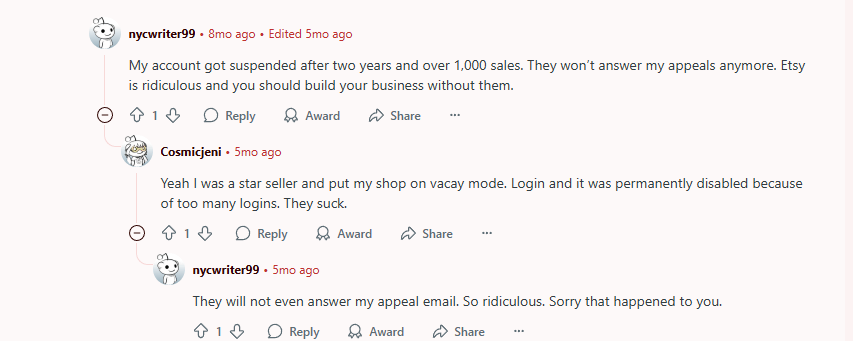 Just two of many complaints related to sudden and unclear Etsy account suspensions.
Just two of many complaints related to sudden and unclear Etsy account suspensions.
In my research, opening accounts tied to different people, banks, and addresses is the only way to run several separate stores. Since their owners are recognized as different Etsy sellers, suspending one store will not impact the other. If they don’t also have less obvious traits in common, that is.
Etsy can easily link accounts operated from the same internet connection or device. The former will have them use the same IP, while the latter creates a distinct browser fingerprint. I’ve tested several methods that promise to make each account truly unique, and only one delivered.
Proxies
Each device that can access the internet does so through an IP address, normally assigned by an internet service provider. Etsy will tie your account to a specific IP or a narrow range of IPs based on your geographic location. That’s why something as innocent as logging in while vacationing abroad can trigger anti-tampering measures and suspensions.
Tying an Etsy account to an IP supplied by a proxy fixes this. Residential proxies are the best option since they source their IPs from real users across the globe and don’t arouse suspicion. Proxies might solve the IP issue, but that still leaves device fingerprinting on a deeper level.
Using a different device for each account
Etsy may also link accounts if it determines they’re accessed from the same device, even if the IPs differ. Let’s say you run a shop from a desktop PC. Hardware specs like the video card and RAM, along with the browser, its resolution, fonts, and many other factors, create a unique fingerprint that serves as a reliable identifier.
It makes sense to get as many physical devices as you have accounts and run each through a proxy or VPN. While that does work for an account or two, it’s not practical at scale.
You’d have to buy a new device for each account. Even if that’s only a low-quality $50 phone, we’re talking about an up-front investment of $250+ for five devices, not accounting for proxy costs. Juggling all these phones for account management is also impractical and time-consuming.
Anti-detect browsers
In the end, I determined that selling on Etsy through multiple accounts is only feasible and safe through an anti-detect browser. Essentially, such browsers create unique virtual fingerprints for each profile indistinguishable from separate physical devices and combine them with IP masking through proxies.
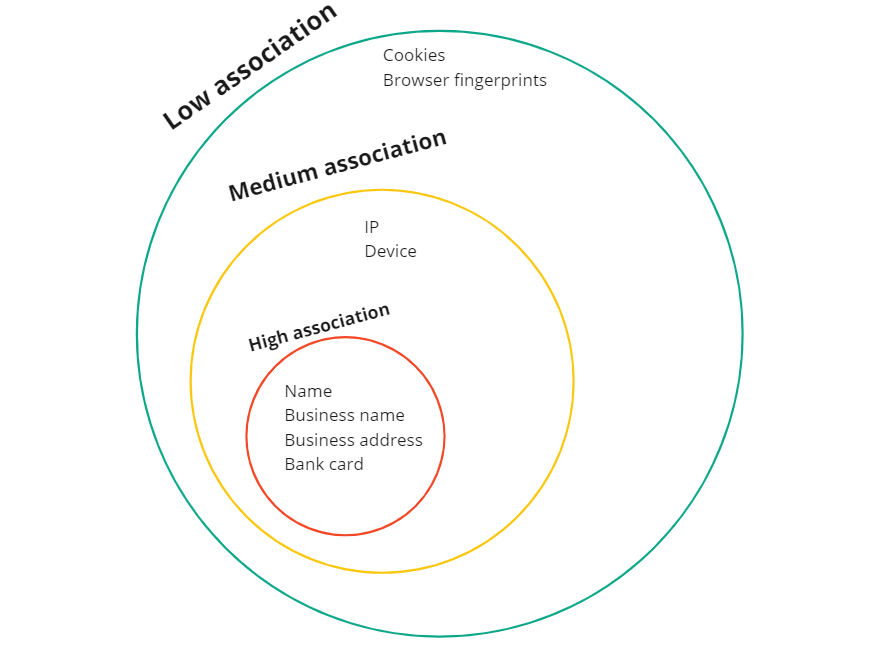
This lets sellers tie each anti-detect browser profile to an Etsy account and run them all from the same browser. Since all possible associations are severed, they appear as completely unrelated Etsy stores.
Anti-detect browsers might work, but there are significant differences between them. I’ve tested and reviewed over a dozen, and GoLogin proved to be both the most effective and intuitive.

Download Gologin for free and manage multiple accounts without bans!
Running Multiple Etsy Accounts with GoLogin
Usability was a high priority during my anti-detect browser assessments. GoLogin proved itself with a quick setup and an onboarding process that familiarizes new users with its interface and capabilities. A 7-day trial activates automatically, which allowed me to experience GoLogin’s unrestricted feature set without commitments.
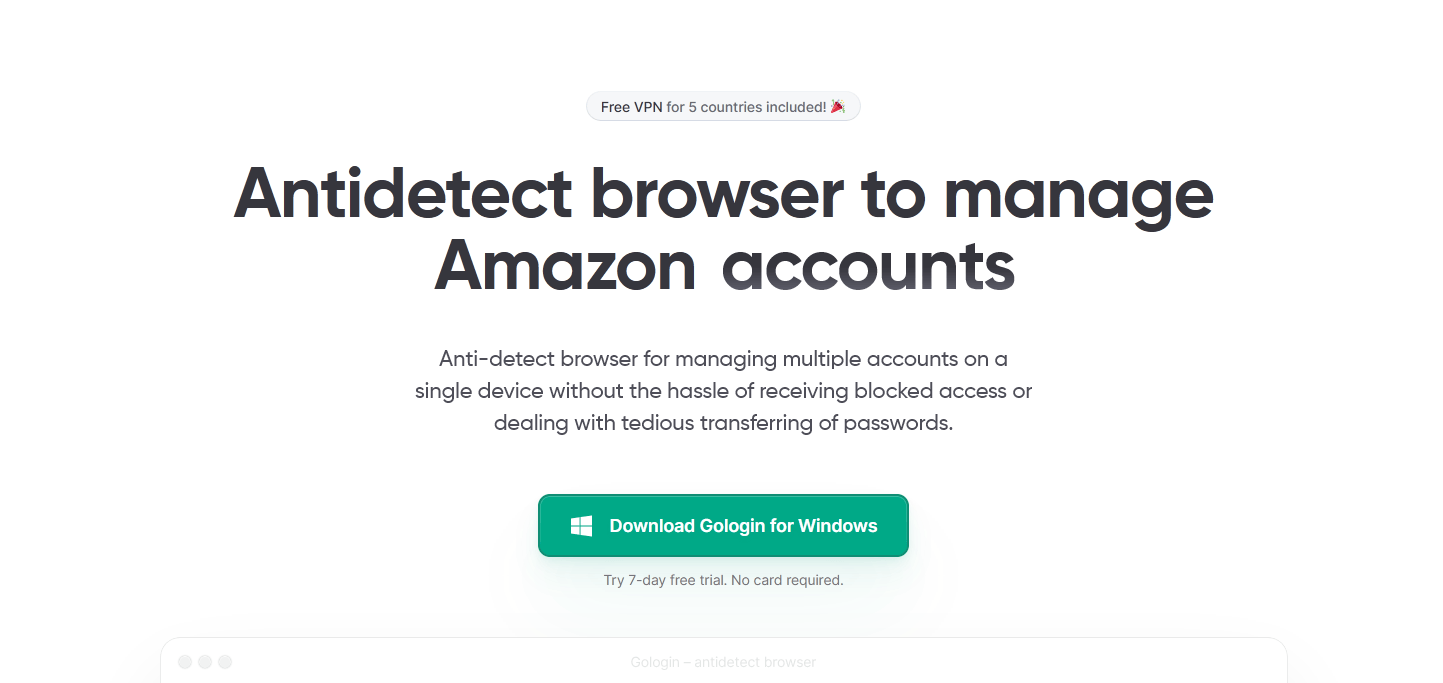
The dashboard is deceptively simple. Minimalistic at first, it can offer detailed information on single profiles or provide a broad overview of dozens of profiles with a few tweaks.
Creating profiles
GoLogin has a profile-based workflow. Each profile is a self-contained browser instance complete with unique fingerprints and a separate IP address, provided you choose a proxy during setup. A click on the Add profile button initiates it.
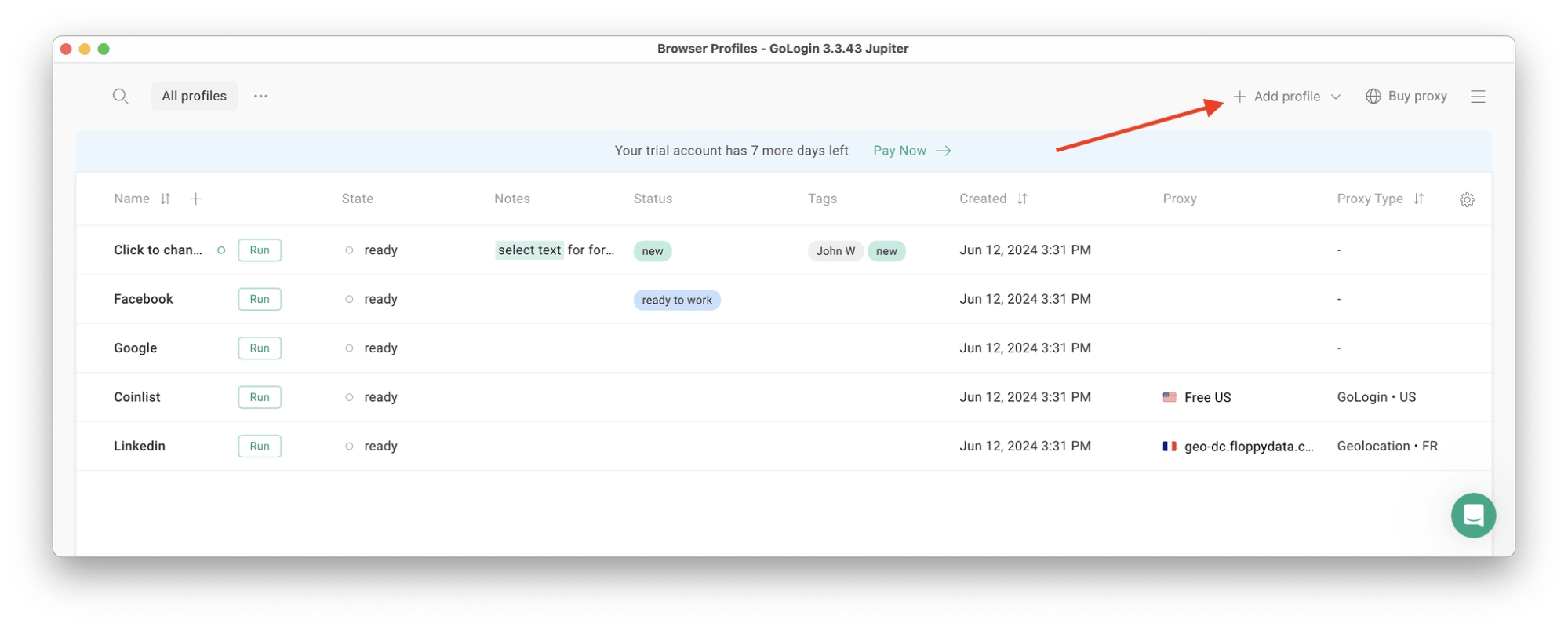
Each profile needs a name. A new folder can be added during creation for easier sorting as well.
It’s important to associate the profile with a proxy to avoid account linking. GoLogin offers native access to proxies in ten countries. Residential ones are the most reliable for avoiding account detection. If your Etsy business is based in Brazil or another currently unsupported country, it’s possible to use third-party proxies instead.
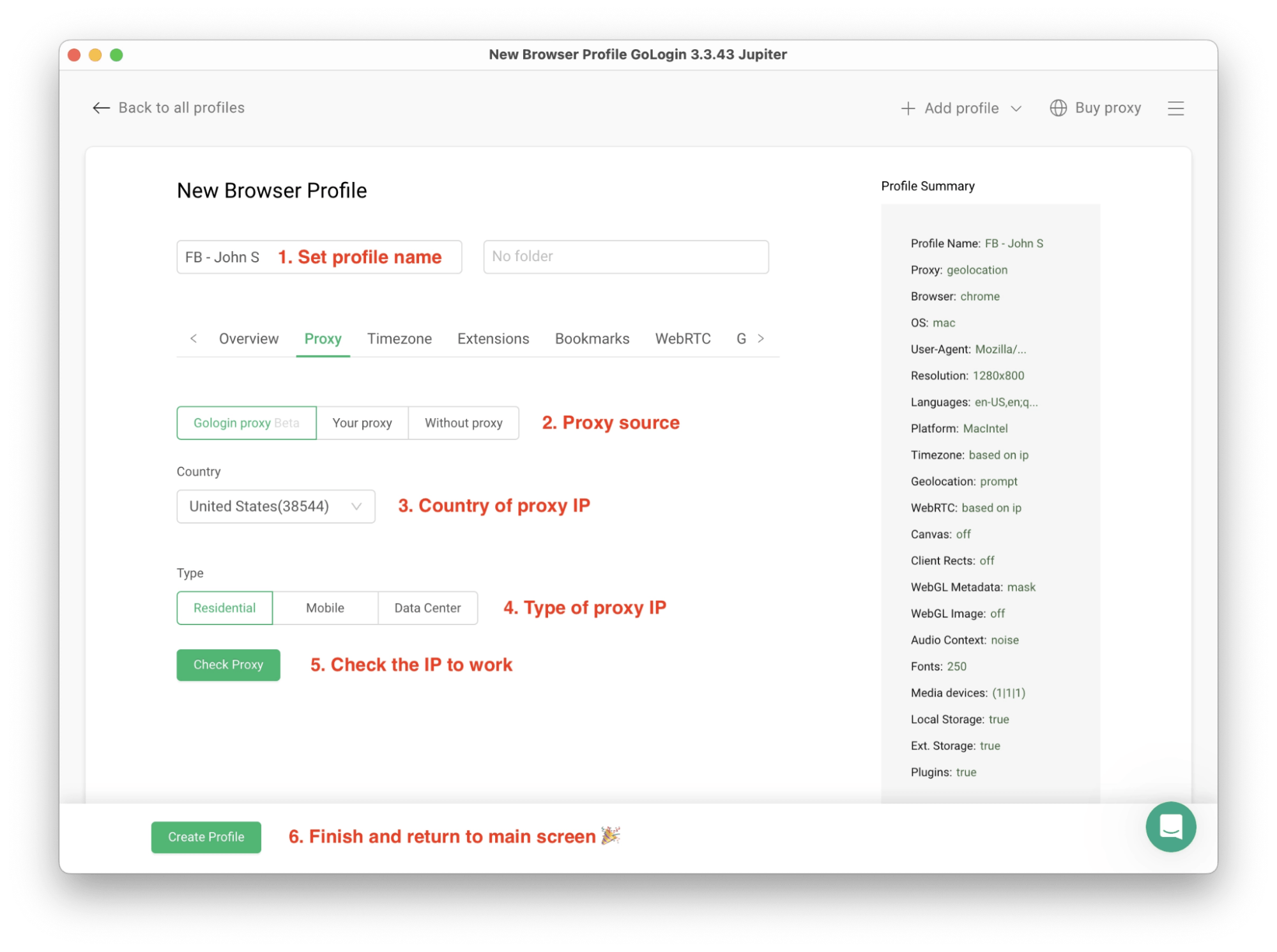
Testing the proxy ensures it works correctly and ties the account to an IP address. Advanced users can tinker with various aspects of the randomly generated browser fingerprint or import bookmarks. It’s not necessary, as the profile created by clicking on the eponymous button at any time during setup works well.
Linking profiles to Etsy accounts
A profile becomes active when you select the Run command next to its name. This opens its browser instance, complete with separate bookmarks, extensions, and browser fingerprints. The instance behaves like a standard browser window.
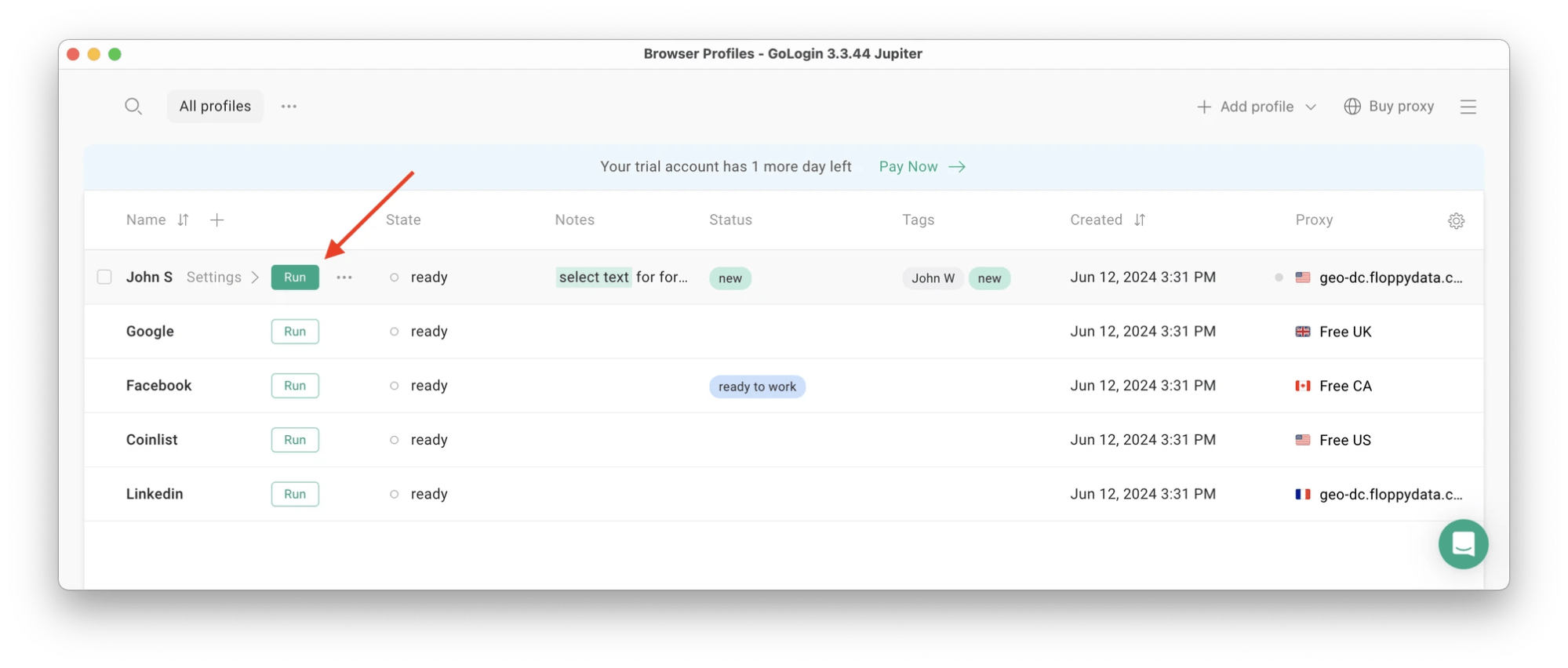
Simply logging into an Etsy account connects it to an active profile. GoLogin will remember the login details, cookies, etc., for each profile and account pair and keep them isolated from one another as well as your physical device.
Repeating the process for each Etsy account was straightforward after that. Soon, I had an entire list with distinct accounts. Since I use a desktop PC, running them all simultaneously isn’t resource-intensive.
Stopping profiles
Once work for the day is done, you can stop a profile by hitting the button beside its name or exiting its assigned browser window. Running the profile again conveniently restores all open tabs.
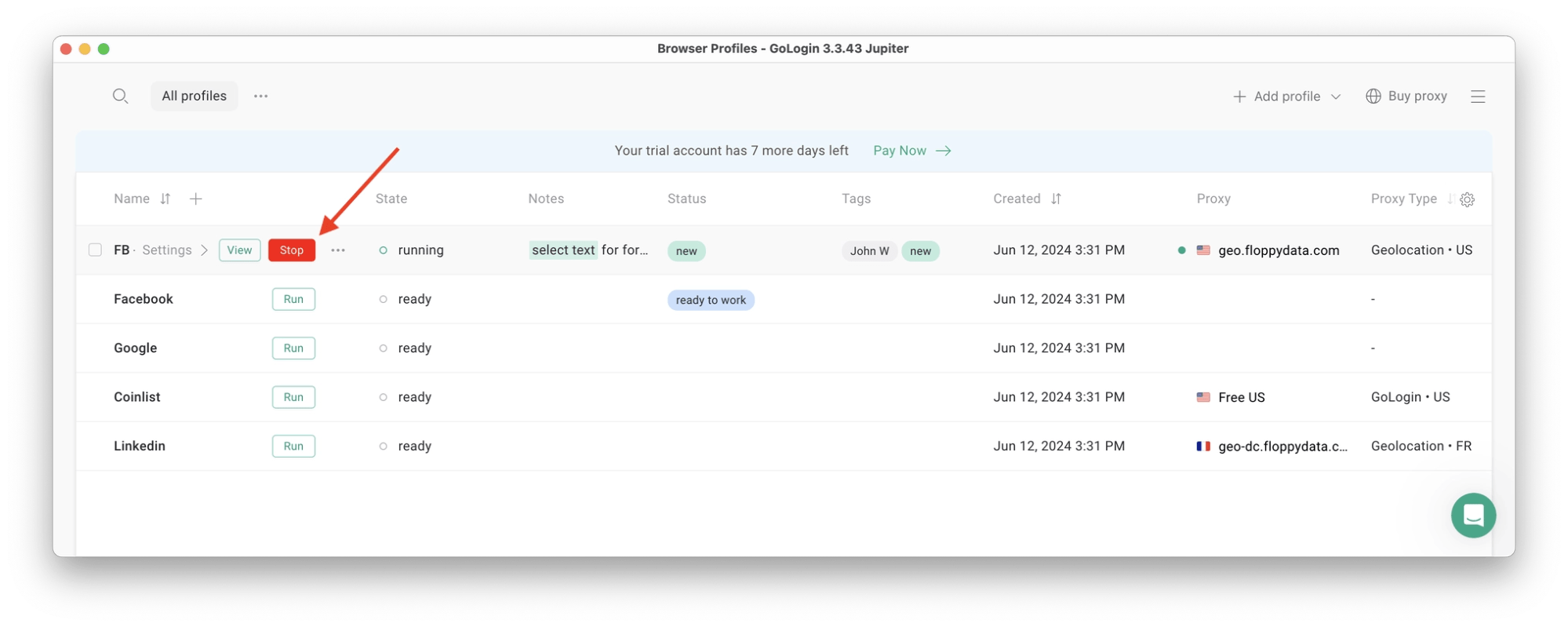
It’s possible to link accounts for other online marketplaces and sites that would benefit from multi-accounting, or you can create separate profiles for them for easier navigation. Apart from names, tags, notes, and folders will help set them apart.
Conclusion
Permanently losing an Etsy account hits especially hard. Sellers with suspended Amazon or eBay accounts can always try their luck on a different platform. On the other hand, a lost Etsy account is a lost once-in-a-lifetime opportunity to connect to and grow from a niche audience that genuinely believes in supporting smaller creators and unique voices.
Rather than give in to the uncertainty of vague violation accusations and unsupervised expert appeal reviews, grow your Etsy shops wisely by cultivating each one separately. GoLogin is the most intuitive and effective tool out there to help you accomplish this.
Try GoLogin out and don’t leave your creative or entrepreneurial future up to the whims of others.
FAQ
1. Why was my Etsy account suspended?
Etsy may suspend accounts for a range of reasons: suspected fraud or payment issues, repeated policy or intellectual-property violations, poor customer service metrics (lots of cases or refund requests), security concerns (compromised/hacked accounts), or problems with required identity/banking verification. Sometimes automated systems trigger suspensions for new sellers or unusual activity. If Etsy emailed you, that message may contain the suspension category.
2. How long do appeals take and what if I don’t hear back?
Response times vary widely. Some sellers get replies within days; others report waiting weeks. If you get no response, people often re-submit a clarified appeal, check that Etsy has valid email contact details, and keep records of submissions. For high-value businesses, some try to contact Etsy’s business/creator support channels. However, there is no guaranteed timeline.
3. Can I create a new account or reopen a closed one?
You can reopen an account you previously closed (Etsy documents the steps to reopen), and you can create a new account — but beware: if the original suspension was for policy violations (fraud, ban evasion, or repeated abuse), creating a new account to continue the same behavior risks additional enforcement. If your appeal is denied, opening a new account is not a substitute for resolving the underlying issue. Follow Etsy’s rules and full disclosure when re-opening or creating accounts.
4. How can I safely manage multiple Etsy shops without getting all of them suspended?
To safely manage multiple Etsy shops without triggering suspensions, you need to use an antidetect browser like GoLogin, which creates completely isolated browsing environments for each account. Standard methods like VPNs or proxies only change your IP address, but Etsy’s sophisticated tracking system monitors dozens of additional data points including browser fingerprints, device characteristics, WebGL metadata, canvas fingerprinting, fonts, screen resolution, timezone, language settings, and behavioral patterns.

Download Gologin for free and manage multiple accounts without bans!
Read other posts about account suspended:
Why Was My TikTok Account Banned? How To Unban In 2025
What Instagram Account Can be Banned For
Why Is My TikTok Account Suspended?
Reddit Account Suspended
Why Is My Instagram Account Suspended?
Why Is My Coinbase Account Restricted?
Why Is My Amazon Account Suspended?
Why Is My eBay Account Suspended?
How to get un Shadowbanned on TikTok?
Why Is My X (Twitter) Account Suspended?
Why Is My Facebook Account Restricted?
Banned From Facebook For No Reason?
Facebook Ad Account Disabled


